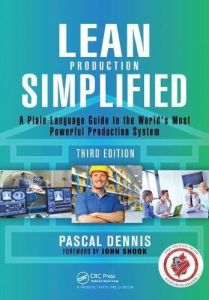Join getAbstract to access the summary!

Join getAbstract to access the summary!
Pascal Dennis
Lean Production Simplified
A Plain-Language Guide to the World’s Most Powerful Production System
Productivity Press, 2017
What's inside?
When you commit to the Lean production system, you commit to excellence.
Recommendation
Engineer and consultant Pascal Dennis’s Toyota sensei (teachers) instructed him on how to summarize the Lean production system succinctly yet elegantly. Dennis starts with the history and purpose of Lean, which is to do more with less while providing excellent customer value. Think of Lean production as a house with stability and standardization as its foundation, customer values its roof, and “just-in-time” and quality control its pillars. The heart is the workforce, from the shop floor to the executive suite. Lean is a process for continuous learning, with perfection as the goal.
Summary
About the Author
Winner of four Shingo Prizes for Excellence, Pascal Dennis is an engineer, author and president of Lean Pathways, an international consultancy.


















Comment on this summary